The town of Daugai is founded in one of the beautiful places of the ethnographic region of Dzūkija, in the district of Alytus, 22 kilometres east from Alytus, next to the regional road of Lithuania No 128. The symbol of the town – a legendary wooden statue of duke Daugis protecting the town and its surroundings. Surrounded by picturesque lakes and full of peace, the town leaves you with an indelible impression and a desire to come back again and again.
Daugai is one of the oldest settlements in Lithuania. It was first mentioned in the chronicles of the Teutonic Order in 1384.
From all sides, Daugai is surrounded by lakes about which many legends and stories have been created. There is also a legend about the origin of the town’s name. Already in the times of king Mindaugas, there were a lot of homesteads here. The houses were surrounded by many forests, which were teeming with various animals and birds. Next to the forests, there was fertile land. And in the very middle of those centuries-old forests, there was a very deep lake full of fish. For the residents, this place was like paradise: the fields yielded good crop, forests were absolutely full of animals, birds, fur for clothing and honey for mead, while the lake was teeming with fish! Later on, here, a manor was set up, and a town was founded nearby. The town was called Daugai, because there was so much of everything here (“daug” in Lithuanian means “a lot of”).
In the 14-15th centuries, there was a rulers’ hunting castle in Daugai as well as a menagerie. According to certain historians, while hunting in Daugai, Jogaila had a meeting with the Teutonic Knights and concluded a secret agreement promising not to support Kęstutis. During the times of Vytautas, a residence of the Grand Duke of Lithuania was located in Daugai. The Grand Duke would often come here for hunting and recreation. Daugai was important for the dukes, which is confirmed by the fact that, at the end of the 14th century, Vytautas gave an order to build a church the parish of which also included Alytus. Daugai was also visited by king Vladislovas Vaza with his beautiful French wife Maria Ludwika.
In the old part of the town, there is a tree-covered Šventapetris Hill, a former mound. Later on, it is believed, the first church of Daugai was built on the hill, now there is a wooden cross on it.
On the market square, there is a Commemorative Sign in Remembrance of Partisans.
A stone three-nave towerless Church of Divine Providence with the features of Gothic, Classicism and Baroque styles, built in 1858–1862.
The old Jewish Cemetery of Daugai. It was functional until World War II. The cemetery has an irregular oval form and covers the area of 1.8 hectares. There are two monuments in the cemetery.
The Grave of Lithuanian Partisans and the Monument for Them in the Cemetery of the Town of Daugai. The grave is located in front of the central gate of the cemetery. In 1990, the remains of 24 partisans, killed after the war, were transferred here. In 1992, the monument was consecrated – it is an oak cross with oak walls on both sides with first names and surnames of partisans as well as years of their birth and death. In the surroundings of Daugai, there are also more places commemorating the partisans.
Close to the northern part of Lake Didžiulis, in the Sala settlement, there is the Sala Mound, which is also called Pilaitė. These are defence fortifications of the beginning of the 2nd millennium with steep slopes. If we believed legends, the mound was made by a fairy. Early in the morning, she was carrying a full apron of land. Suddenly the cocks crowed, the fairy got frightened, stumbled and spilled the land. This is how the Sala mound appeared.
In the surroundings of Daugai, in Bukaučiškės (if you want to go there, please follow the instructions, because there are two settlements of Bukaučiškės in the surroundings of Daugai), there is a 19th-century Red-brick Romanesque Chapel with Neo-gothic Elements of the manor of Vladas Mironas, a former signatory to the Act of 16 February 1918, priest, prime minister and the chaplain of the army. The chapel may be reached when going from Daugai through Rimėnai, taking a left turn at the first crossing after Rimėnai. You have to take a gravel road and go straight all the time, then you will see a wooden cross on the hill on the left, there you have to turn left and take a small road to the right. As the rural road ends, you have to take a turn to the right once again. And very soon you will see a beautiful chapel on the hill. If we believed legends, long ago old and very tall maples were growing on the hill, on the top of which a chapel has been built. And in those maples, many storks lived. They protected a mysterious staircase by which the spirits of the virtuous dead reached heaven. In the basement of the chapel, on the sides, there are niches where land owners used to be buried. Unfortunately, they have been plundered.
Close to the chapel, there is a site of the former manor with scantily remaining parts of the decayed building (a wall, the foundation).
The Pine-tree of Žvirgždėnai (Žvirgždėnai village, 3 kilometres away from Daugai). Legends still have it that, if you look around the pine-tree well enough, you can find ancient coins. It is told that beggars used to sit next to this tree and ask for alms from those going by, while the coins thrown would often sink into the dust of the road. It is also told that the tree is haunted. The trunk of the pine-tree is 1 metre in diameter and 13 metres in height. In 1960, the pine-tree of Žvirgždėnai was declared an object of natural heritage.
Aukakalnis Hill in Doškonys village (3.5 kilometres from Daugai). The form of the hill reminds of a flat pyramid; and it is surrounded by Lake Daugai from three sides. From the hill, a wonderful view of the surroundings of Daugai opens. During the pagan times, sacrifices were made here. Archaeologists have found the remains of an ancient settlement of the 1st millennium. The legend of Aukakalnis hill has it that there was a stone castle on the hill, wherein pagan priestesses tended a fire in honour of the pagan god Thunderer (Perkūnas). When they refused to do that, the Thunderer got angry and made lightning strike the castle. The castle was split into small fragments which remained on the slopes of the hill. Today, if you have a careful look at the hill’s slopes, you can see small stones of the remains of the castle.
At the beginning of July, Daugai traditionally celebrates The Day of Statehood – Coronation of the King of Lithuania Mindaugas.
Authors of photographs: G. Bernatavičius, D. Minsevičius, J. Struckienė, S. Šmigelskas, archive of Alytus Tourism Information Centre, E. Rugieniūtė



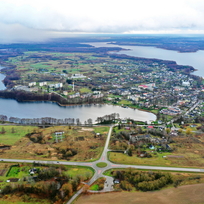
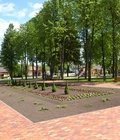
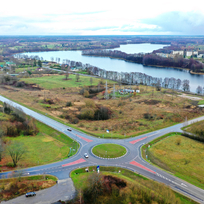

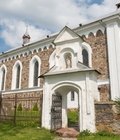

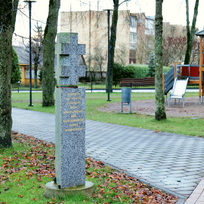
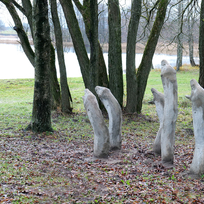
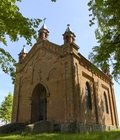
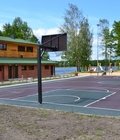
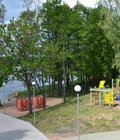
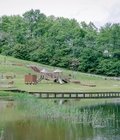


Reviews